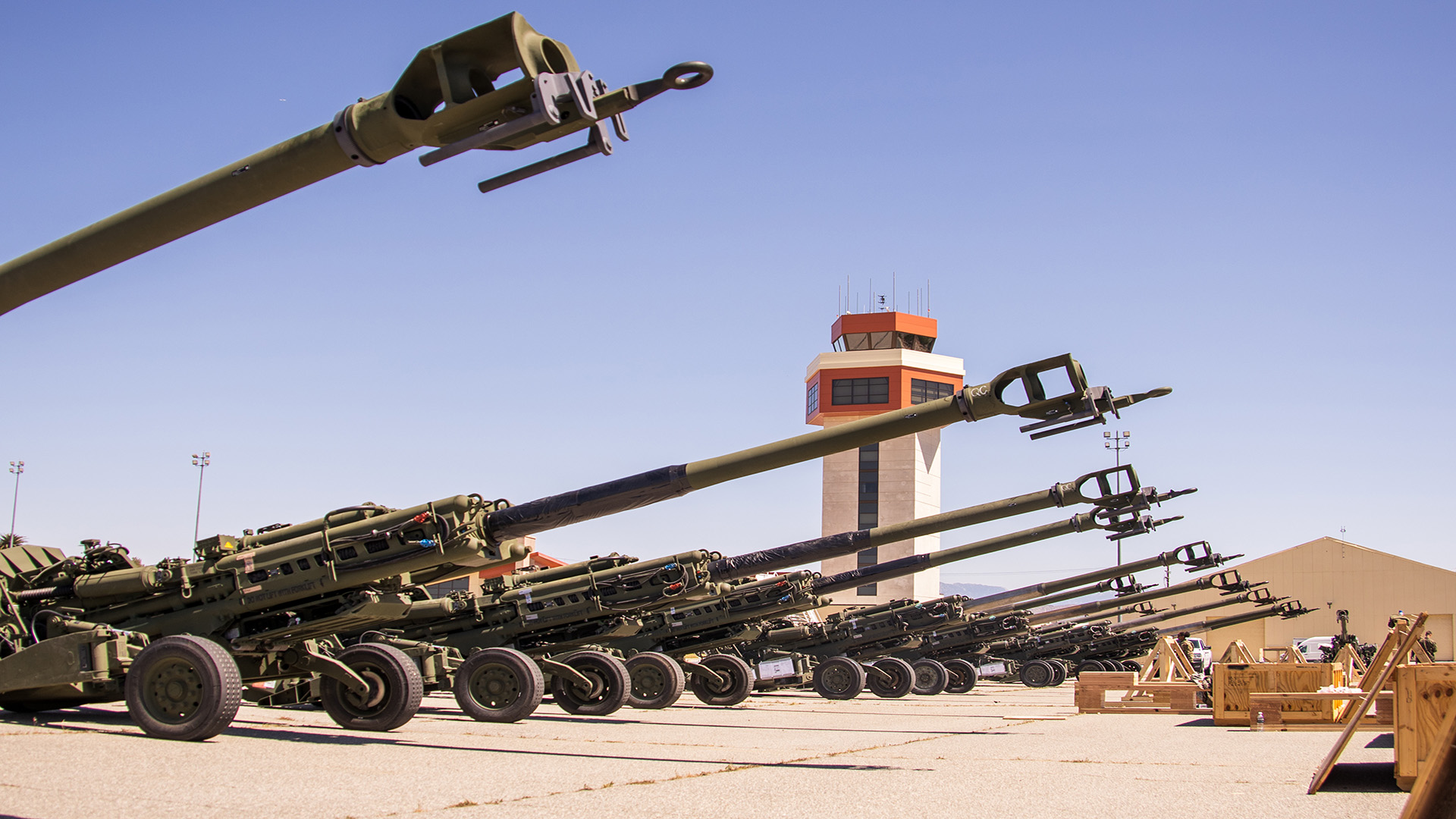We’ve always called it ‘the king of battle'"

taskandpurpose.com
About 70 of the 155 mm guns along with roughly 70,000 artillery rounds have been transferred to Ukraine so far, a senior defense official told reporters on Monday. More than 200 Ukrainian troops are expected to be trained on how to operate the howitzers by the end of Monday with another 50 Ukrainian service members scheduled to begin training later this week.
The first Ukrainian artillerymen were trained by Canadian troops and other Ukrainians were taught how to operate the howitzers by Florida National Guardsmen, the senior defense official said at a Pentagon news briefing. Those guardsmen had been on a training mission inside Ukraine before the Russian invasion and now they are continuing their mission in Germany.
The Defense Department is also providing Ukrainian forces with 14 counter-artillery radars. Combined with those radars, which the Ukrainians have been receiving since 2015, the howitzers will allow Ukrainian forces to target and attack Russian tube and rocket artillery, said retired Army Lt. Gen. Ben Hodges, former commander of U.S. Army Europe.
“The radar intercepts incoming artillery and then your own guns can shoot back at where it came from quickly,” Hodges said. “This is an important part of the fight. And so, providing the Ukrainians additional artillery will enable them to destroy – or at least disrupt – the Russian artillery and rocket launchers that are causing the most damage against Ukrainians – but also against towns and cities.”
Artillery is generally used against targets in the open, such as air defense systems, logistics areas, and convoys of lightly armored vehicles, Hodges said. Other prime targets for artillery include command posts and headquarters.
“If you discover a division or combined arms army headquarters in a village or set up somewhere – that’s exactly what you would want to do, is hammer that with artillery,” Hodges said.
As well as providing the Ukrainians with a strong defensive capability, the howitzers would also allow Ukrainian forces to switch to offense, Hodges said. “If there is a counterattack of any sort by the Ukrainians or a conventional counter-offensive, they will need the artillery to support their attack as well,” he said.
There are two ways the Ukrainians could use their new howitzers to go on the attack: They could fire massive barrages to blow holes through the Russian lines, or they could destroy Russian artillery ahead of the attack, said retired Army Col. Tom Davis, who led the 4th Battalion, 82nd Field Artillery Regiment in the 3rd Armored Division during the 1991 Gulf War.
Every time the Russians fire one of their own artillery pieces, they will have to pack up and move to avoid the Ukrainian counter fire, Davis told Task & Purpose. The Russians also tend to concentrate their artillery “hub-to-hub” while the U.S. military keeps artillery units spread out as a form of protection.
Ultimately, the Ukrainians should receive a total of 183,000 artillery rounds for their M777 howitzers, according to the Defense Department. To put that number into perspective, Davis said that his battalion fired fewer than 1,000 rounds during the Gulf War’s four-day ground campaign.
Video from April 23rd that claims 92% of previously recorded hits with Excalibur were within 4m.
Recent clips might be confirming that claim if these are the systems the Ukrainians are seen putting to good use.








